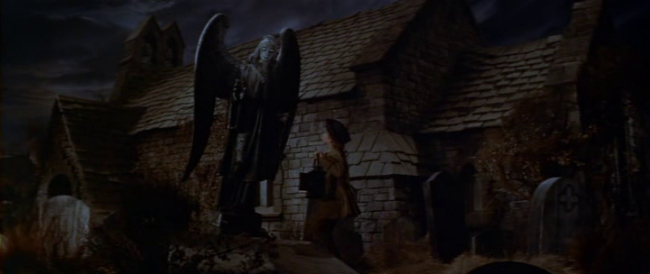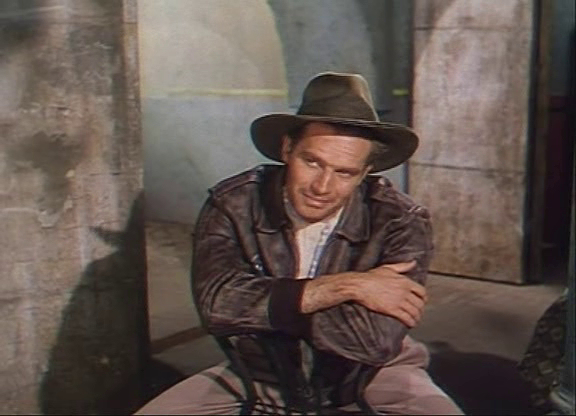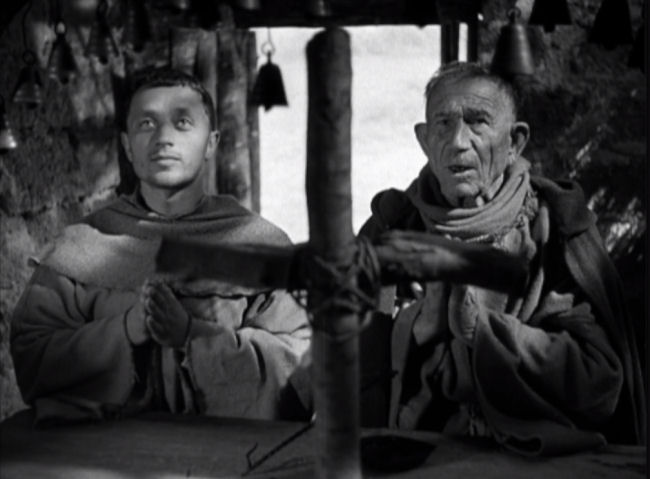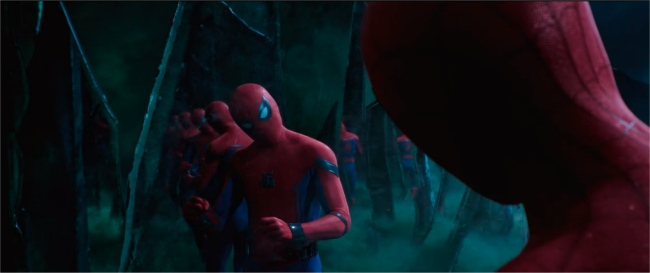
Many dangers are faced by the wayward, adventuring gentleman, particularly if he's prone to foolishness. For their 11th animated feature film, 1949's The Adventures of Ichabod and Mister Toad, Disney chose two classic tales that may not seem to have much in common to the casual viewer. But the source materials, 1908's The Wind in the Willows and 1820's The Legend of Sleepy Hollow, are both centred on deeply flawed, cultured gentlemen. One foolhardy and the other a coward, both are driven to satisfy sensual urges, and both meet with tragedy. The stronger of the two stories, the one about Ichabod Crane, is also the one most faithfully adapted from its source material while the one about the master of Toad Hall is by no means bad and also kind of fascinating for its deviations from The Wind in the Willows. In any case, I would argue that Ichabod and Toad have one very important common ancestor, none other than Sir John Falstaff, the footpad knight, the tavern fixture, the renowned, disreputable, and beloved creation of William Shakespeare.
The Wind in the Willows by Kenneth Grahame is a very strange book, particularly by the standards of modern fantasy. Unlike Lord of the Rings or The Chronicles of Narnia, the underlying rules governing the world of intelligent animals are never clear and rarely consistent. In one scene, Rat and Mole secretly observe the world of humans one night, peeping in windows in a village. In another scene, Toad is arrested and processed in a court of law. Toad hates being underwater but Badger and Mole feel a deep affinity for underground dwellings. Sometimes the animals are essentially people with animal shapes, sometimes they're plain and simply animals. You could say the inconsistency is a bit like Alice in Wonderland but Alice in Wonderland explains it with a framing device that makes everything Alice experiences a dream.
You could also say Wind in the Willows feels like two distinct stories mixed together--a tranquil tale of friendship and communing with nature centred on Rat and Mole, and the story of absurd, foolish adventure centred on Toad. An eerie scene where Rat and Mole apparently encounter Pan is more reminiscent of Arthur Machen than a gentle child's tale. Other scenes which dwell on how much Rat and Mole enjoy being comfortable hardly seem as though they could interest a child.

So it's hardly surprising that Disney completely removed Rat and Mole's adventures, converting the characters into purely supporting characters in a story about Toad.
This was the last of Disney's series of anthology films of the 1940s and both stories feel more like self contained, complete, traditional narratives than anything in the previous anthology films. Aside from the "Mickey and the Beanstalk" segment in Fun and Fancy Free, Mr. Toad is the first of these shorts to feature a full cast. Basil Rathbone serves splendidly as narrator but even better is Eric Blore in the role of Toad. It's hard to imagine better casting than the English character actor whose Toad-like appearance and affectation would be familiar to anyone who saw The Lady Eve or Shall We Dance or any number of films from the 1930s (according to his Wikipedia entry, he appeared in over 60 films between 1930 and 1955).

As good as he is, though, it's in the character of Toad that Disney deviated so significantly from Grahame's book. Where the Toad of the book is a blowhard, a genuine thief, and completely incapable of accomplishing a heroic deed, the Toad of the Disney film is wrongly convicted of the crime of stealing a motorcar, actively contributes to the plan of recovering Toad Hall, and is directly responsible for the final victory of recovering the deed.
Toad in the book is described as "a thoroughly good-hearted animal" who's willing to admit when he's wrong but he's also petulant and jealous and willing to verbally abuse his friends to conceal his own sense of inadequacy.
"Oh, you silly ass, Mole!" cried Toad, "You've been and spoilt everything!"
"Mole," said the Badger, in his dry, quiet way, "I perceive you have more sense in your little finger than some other animals have in the whole of their fat bodies. You have managed excellently, and I begin to have great hopes of you. Good Mole! Clever Mole!"
The Toad was simply wild with jealousy, more especially as he couldn't make out for the life of him what the Mole had done that was so particularly clever; but, fortunately for him, before he could show temper or expose himself to the Badger's sarcasm, the bell rang for luncheon.
Toad also composes songs about his own greatness, including one referred to by the narrator as "perhaps, the most conceited song that any animal ever composed." When he tells Mole about his exploits when escaping from prison, he lies and exaggerates his own accomplishments and brags about stealing a horse, not unlike Falstaff bragging about besting an ever multiplying number of assailants in Henry IV during his attempt at robbery. In both cases, one might also wonder just why we love this guy so much.

This may have been precisely Disney's thought in morally rehabilitating the character. Would American audiences believe the Toad of the book really deserves to have Toad Hall and his fortune restored to him? Or would it just be too disgustingly amoral? The motive for Disney to change the story may lie in a latent Puritan morality that insists rewards directly correlate to virtue. One could almost describe the book as Royalist--Badger, Rat, and Mole never question the propriety of restoring Toad to his birthright. It's just natural that Toad would inhabit Toad Hall.

This is part of the subtle charm that he is a Toad. Every time the story ascribes to him some petty, obnoxious action, there is an indirect invitation to remember that he is a toad, after all. How would you expect a toad to act? In this, the story's logistical inconsistency is brilliant and very like a folktale.

The changes made to Toad's story are more puzzling because Ichabod's story is so faithful. In fact, it remains the most faithful adaptation of Washington Irving's story that I've seen. I like the Tim Burton film but its story bears almost no resemblance to the original tale. And don't get me started on the TV show from a few years ago.
Unlike the Toad segment, the Ichabod segment is voiced entirely by one man--Bing Crosby. His voice is magnificent, of course, and the three songs, "Ichabod", "Katrina", and "The Headless Horseman", are all made greater by his delivery. Surprisingly, much of his narration is taken directly from Washington Irving, including the physical description of Ichabod Crane:
He was tall, but exceedingly lank, with narrow shoulders, long arms and legs, hands that dangled a mile out of his sleeves, feet that might have served for shovels, and his whole frame most loosely hung together. His head was small, and flat at top, with huge ears, large green glassy eyes, and a long snip nose, so that it looked like a weathercock perched upon his spindle neck to tell which way the wind blew. To see him striding along the profile of a hill on a windy day, with his clothes bagging and fluttering about him, one might have mistaken him for the genius of Famine descending upon the earth or some scarecrow eloped from a cornfield.
From this, too, the film's character design finds ample inspiration:

The story of a superstitious teacher, who comes to reside in a small Dutch community in pre-1800 upstate New York, who's beloved by the local women, who covets the coquette Katrina Van Tassel as much for her own charms as her father's fortune, who enters into rivalry with the local Brom Bones, are all elements directly taken from the short story. Disney adds to this some of the best physical comedy sequences in their animated canon. I particularly like Brom and Ichabod slyly brawling outside Katrina's door as Ichabod manages to avoid and inflict damage on his opponent with all the graceful inattention of Buster Keaton.

Yet he's a complicated character. He's kind of a hero--we instinctively like him better than Brom--but his motives, his love of good food and Katrina's beauty and wealth, are certainly not "pure". And yet they're human, too.

The Legend of Sleepy Hollow was originally included in The Sketch Book of Geoffrey Crayon, an anthology written by Irving while he was travelling in Europe. Most of the stories feature European subjects, too, particularly relating to England. And one name that comes up again and again is Falstaff. One story is devoted to a search for the original Boar's Head, the inn in which Falstaff dwelt in Shakespeare's plays. Another of Irving's stories is devoted to inn culture in Europe in general and begins with a quote from Falstaff: "Shall I not take mine ease in mine inn?"
At the start of his journey to Europe, Irving had recently lost his family fortune due to his brother's imprudent investments. Not unlike Toad's loss of Toad Hall, Irving saw his impending life changes as being unsuited to his nature and he was very melancholy about it, as can be seen in the gloom of stories like "The Voyage". Irving's fixation on Falstaff seemed partly to do with the nature of Falstaff's inn as a place where rich and poor may dwell in the comforts of community and also find life's basic necessities. But in both of the collection's most famous stories, Rip Van Winkle and The Legend of Sleepy Hollow, we find ourselves sympathising with distinctly Falstaffian characters.

It's hardly a surprise that The Legend of Sleepy Hollow so much resembles The Merry Wives of Winsdor. In Shakespeare's play, Falstaff covets women for their wealth and beauty and the final scene involves a staged supernatural encounter with Herne the Hunter, a supernatural figure from folklore not unlike the Headless Horseman (arguably, Herne is related to the Germanic folk tales Irving drew from for the Horseman). Some would say the conclusion of Irving's story makes it unclear whether the Horseman Ichabod encounters is really Brom Bones in disguise or in fact the spectral menace. I would say it's obviously Brom Bones but naturally no-one wants to hear that. Which is more cruel, really? That Ichabod was randomly slaughtered by a ghost or that Ichabod was rejected by the community and the woman he coveted? In the story, Ichabod has lost the affections of Katrina before encountering the Horseman.
Was her encouragement of the poor pedagogue all a mere sham to secure her conquest of his rival? Heaven only knows, not I! Let it suffice to say, Ichabod stole forth with the air of one who had been sacking a hen-roost, rather than a fair lady’s heart. Without looking to the right or left to notice the scene of rural wealth on which he had so often gloated, he went straight to the stable, and with several hearty cuffs and kicks roused his steed most uncourteously from the comfortable quarters in which he was soundly sleeping, dreaming of mountains of corn and oats and whole valleys of timothy and clover.
Disney's film never mentions any change in Katrina's feelings for Ichabod, implying she married Brom Bones simply because Ichabod had been "spirited away". Perhaps a terrifying encounter with a headless ghost is a more attractive fate--at least it's grand. But the story is maybe a subtler comment on how a community can reject an outsider, even the manifestation of that community in the heart of one woman. Or maybe it's just because he looks like scarecrow. In any case, like Falstaff and Toad, there is something oddly attractive about this morally imperfect, entirely too human, character.
The Adventures of Ichabod and Mister Toad is available on Disney+.
Twitter Sonnet #1385
Behind the face moustaches grew awry.
The deepest spine could dine at early dawn.
The organ tube at last could just comply.
A suite of games obscures the grassy lawn.
A spindly new display arrives to sup.
Decisions flake the dough to fluffy dreams.
The sugar flutters down inside the cup.
The snow remembers suns the size of teams.
A double figure danced along a fence.
The storied hall was passed from hand to paw.
A shaking engine changed the shining cents.
A wayward teacher broke a shadow law.
The rusted anchor slips through weightless sand.
The brittle branch avails no sinking hand.





















































